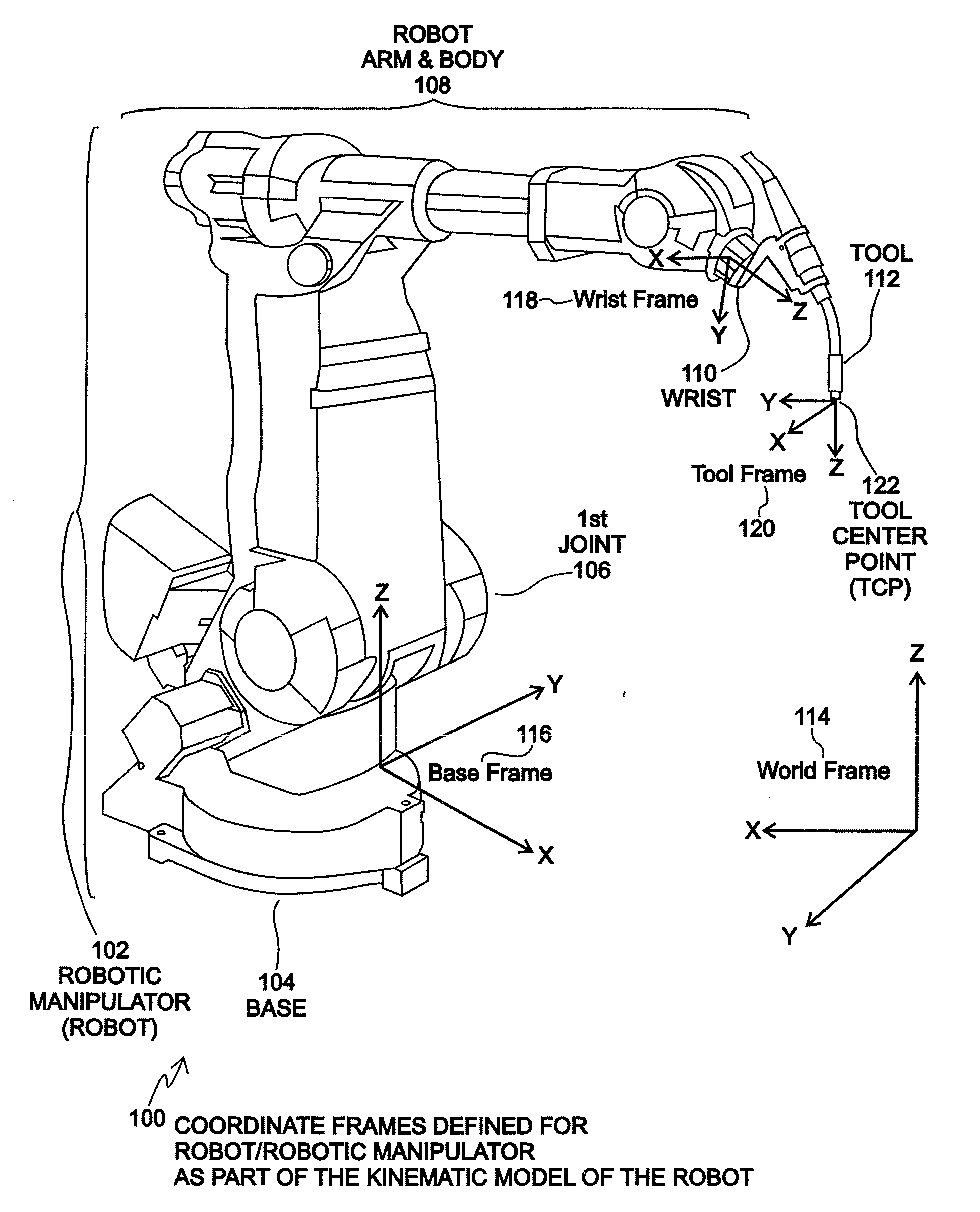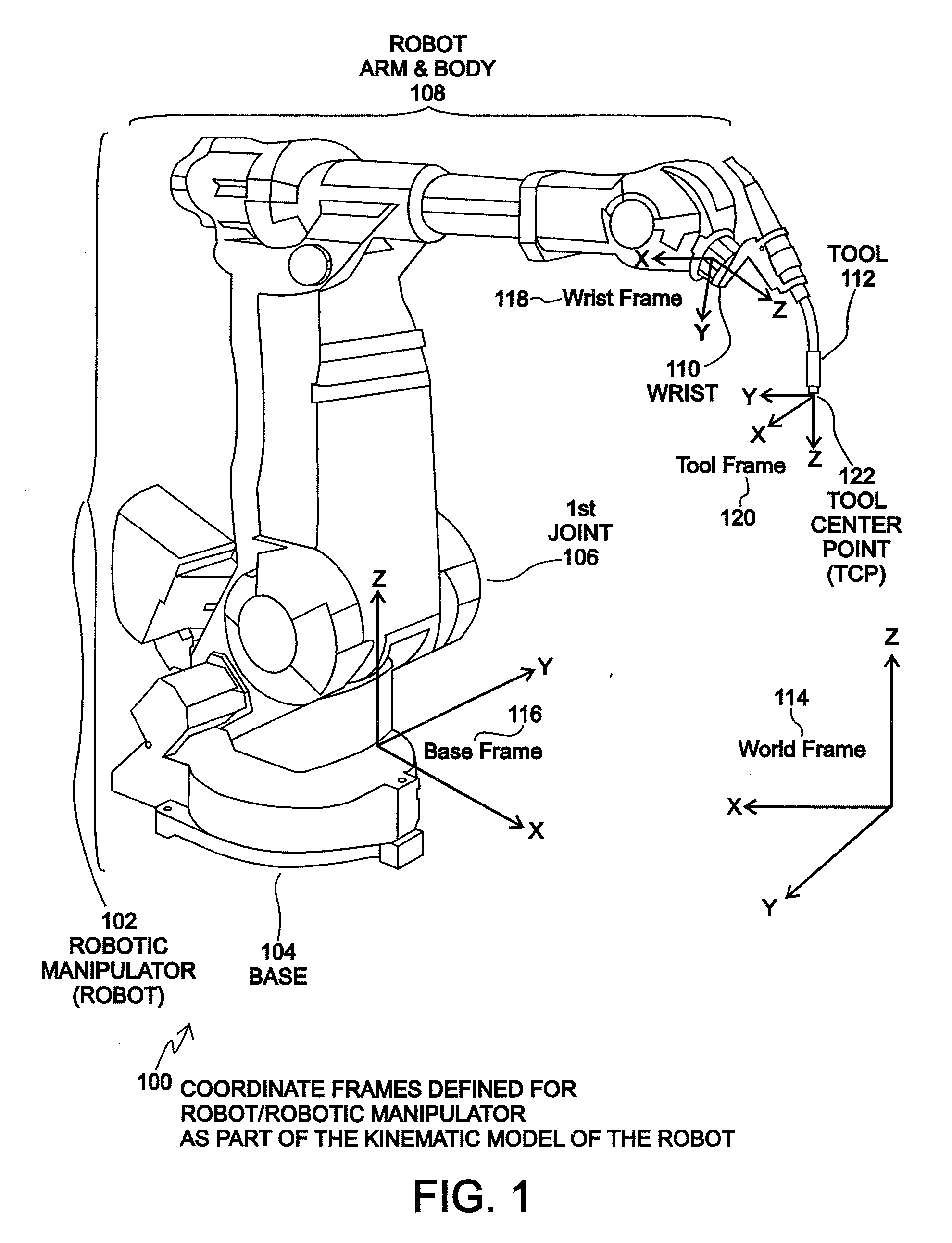Method and system for finding a tool center point for a robot using an external camera
a robot and camera technology, applied in the field of method and system for finding the center point of the robot using the camera, can solve the problems of increasing the complexity of the automated system and the need for a higher-level type of programming
- Summary
- Abstract
- Description
- Claims
- Application Information
AI Technical Summary
Benefits of technology
Problems solved by technology
Method used
Image
Examples
Embodiment Construction
[0033]FIG. 1 is an illustration 100 of coordinate frames 114-120 defined for a robot / robot manipulator 102 as part of a kinematic model of the robot 102. In a simple form, an industrial robot may be comprised of a robot manipulator 102, power supply, and controllers. Since the power supply and controllers of a robot are not typically illustrated as part of the mechanical assembly of the robot, the robot and robot manipulator 102 are often referred to as the same object since the most recognizable part of a robot is the robot manipulator 102. The robot manipulator is typically made up of two sub-sections, the body and arm 108 and the wrist 110. A tool 112 used by a robot 102 to perform desired tasks is typically attached at the wrist 110 of the robot manipulator 102. A large number of industrial robots 102 are six-axis rotary joint arm type robots. The actual configuration of each robot 102 varies widely depending on the task the robot 102 is intended to perform, but the basic kinema...
PUM
 Login to View More
Login to View More Abstract
Description
Claims
Application Information
 Login to View More
Login to View More - R&D
- Intellectual Property
- Life Sciences
- Materials
- Tech Scout
- Unparalleled Data Quality
- Higher Quality Content
- 60% Fewer Hallucinations
Browse by: Latest US Patents, China's latest patents, Technical Efficacy Thesaurus, Application Domain, Technology Topic, Popular Technical Reports.
© 2025 PatSnap. All rights reserved.Legal|Privacy policy|Modern Slavery Act Transparency Statement|Sitemap|About US| Contact US: help@patsnap.com



